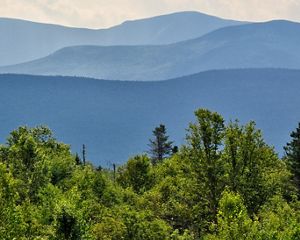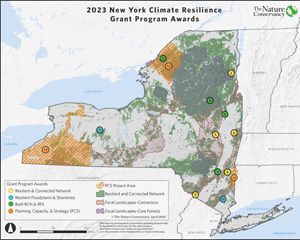The Nature Conservancy launches grant program across the Appalachians to promote resilience, connectivity, and communities
The Resilient and Connected Appalachians Grant Program provides funding opportunities up to $100,000 for nonprofit organizations, municipalities, and other partners throughout the Appalachians.
Media Contacts
-
Andrea Murrell
Appalachians Communications Director
Email: andrea.murrell@tnc.org
In a continued effort to make the highest possible impact on the climate and biodiversity crises, The Nature Conservancy (TNC) is advancing projects and partnerships throughout the Appalachians through its Resilience and Connected Grant Program. Grants will support projects to expand capacity and opportunities to create a connected network of healthy lands and waters and support resilient communities across 18 states in the Appalachians landscape.
The Resilient and Connected Appalachians Grant Program provides funding opportunities for nonprofit organizations, municipalities, and other partners to engage in conservation efforts in the Appalachians—a center of climate resilience and a critical migration corridor for wildlife. The Program offers grants of up to $100,000 to support projects that result in the permanent protection of resilient and connected lands in pivotal landscapes. For the 2024-25 grant cycle, funding is available in Maine, Vermont, New Hampshire, Massachusetts, Connecticut, New York, New Jersey, Pennsylvania, Ohio, Maryland, West Virginia, Virginia, Kentucky, North Carolina, South Carolina, Tennessee, Georgia, and Alabama.
“We are thrilled to offer these grant opportunities across the Appalachians landscape this year,” said Heather Furman, Appalachians Director for The Nature Conservancy. “The program exemplifies how working in collaboration with partners greatly expands the scale and pace of our conservation impact. Together we are connecting and conserving vital wildlife habitat while generating economic growth and recreation opportunities for communities.”
Community benefits resulting from projects funded by the Resilient and Connected Appalachians Grant Program include improvements in how communities cope with the effects of climate change, and increases in natural spaces for enhanced community well-being. This is particularly critical in marginalized communities, including but not limited to communities with little to no access to high-quality green spaces, and communities experiencing heightened impacts of climate change due to systemic under-investment and poor infrastructure.
The Resilient and Connected Appalachians Grant Program is part of the larger Connectivity, Climate and Communities Fund, which also includes The New York Climate Resilience Grant Program. The Fund’s overall areas of focus include:
- Connectivity: Creating a connected network of resilient lands and waters – a biodiversity superhighway enabling plants and animals to adapt to a changing climate.
- Climate: Protecting and managing forests that store significant amounts of carbon, accelerating the transition to well-sited renewable energy and helping communities to adapt and mitigate impacts from flooding.
- Communities: Supporting resilient communities and sustainable livelihoods and strong connections to their natural landscapes.
For more information about eligibility and guidelines, visit the website.
The Nature Conservancy is a global conservation organization dedicated to conserving the lands and waters on which all life depends. Guided by science, we create innovative, on-the-ground solutions to our world’s toughest challenges so that nature and people can thrive together. We are tackling climate change, conserving lands, waters and oceans at an unprecedented scale, providing food and water sustainably and helping make cities more resilient. The Nature Conservancy is working to make a lasting difference around the world in 81 countries and territories (40 by direct conservation impact and 41 through partners) through a collaborative approach that engages local communities, governments, the private sector, and other partners. To learn more, visit nature.org or follow @nature_press on X.



